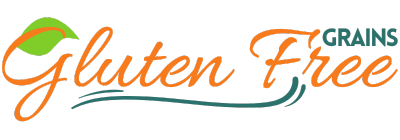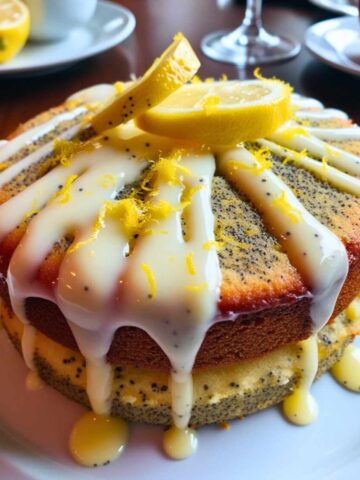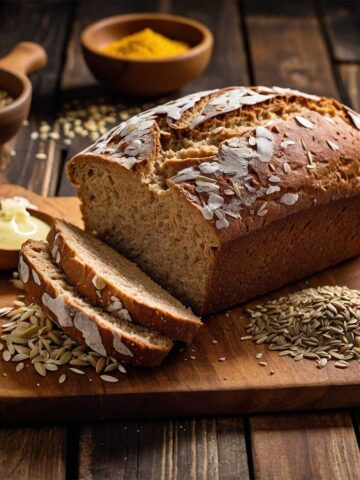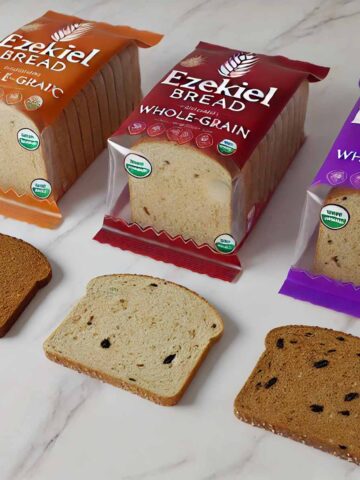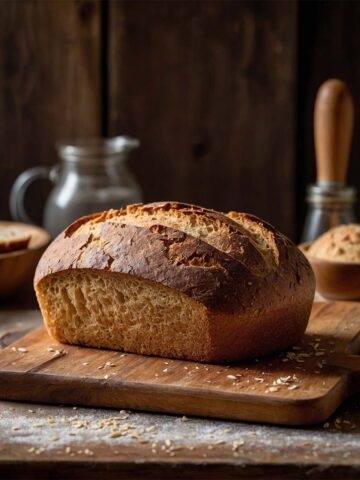Gluten Free Diet Bread isn’t just a substitute—it can still be comforting and delicious. Think of the joy of biting into a warm, freshly baked loaf with a crisp crust and soft inside. If you’ve had to give up regular bread due to celiac disease, gluten sensitivity, or a lifestyle choice, you might feel lost at first. But there's good news!
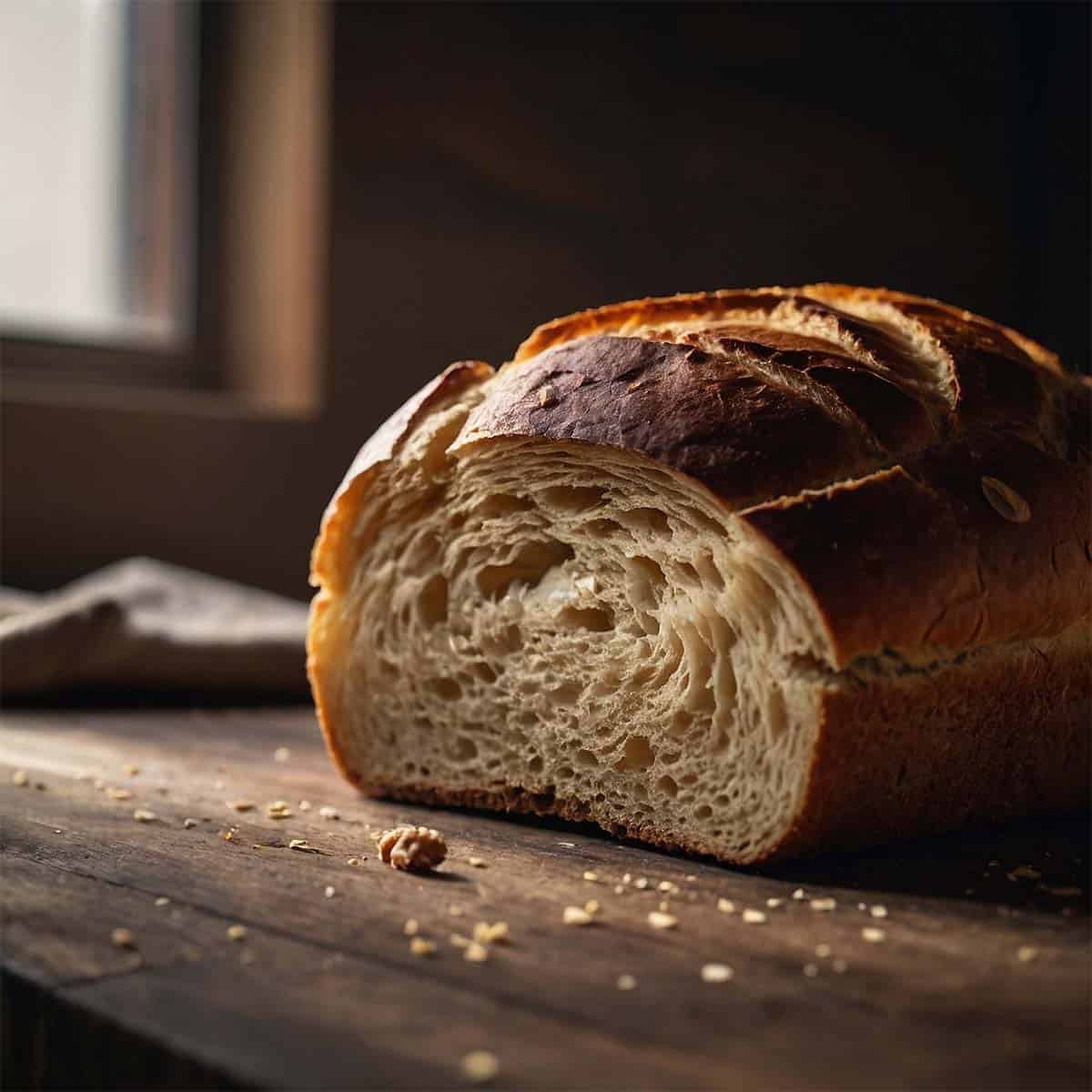
This guide will make things easier by covering everything from the basics of gluten free bread and its health benefits to simple baking tips and creative variations. Ready to enjoy gluten free bread that’s just as good as the real thing? Let’s jump in!
Jump to:
- What Is Gluten Free Diet Bread?
- Why Consider Gluten-Free Diet Bread?
- Getting to Know the Ingredients in Gluten-Free Diet Bread
- Baking Gluten Free Diet Bread at Home: Essential Tips
- Your Go-To Recipe for Homemade Gluten Free Diet Bread
- Tips for the Best Bread
- Avoid These Common Mistakes in Gluten-Free Bread Baking
- Exploring New Flavors: Variations to Try
- Storing Your Gluten-Free Bread
- Enjoying Gluten-Free Bread: Pairing Ideas
- A Final Slice of Wisdom
- FAQs
- Related
What Is Gluten Free Diet Bread?
If you're new to the gluten-free scene, gluten free bread might sound intimidating. Let's break it down into bite-sized pieces.
Gluten-Free Bread 101
Simply put, gluten free diet bread is bread made without gluten—a protein found in wheat, barley, rye, and their derivatives. Gluten is what gives traditional bread its chewy texture and helps it rise. Without it, baking bread becomes a different ball game. To recreate bread's familiar texture and flavor, gluten-free bread relies on alternative flours like almond, coconut, rice, or buckwheat, each bringing its unique flair to the table.
How Is It Different from Regular Bread?
The main difference between gluten-free and regular bread is in the texture and structure. Traditional bread gets its airy, fluffy quality from gluten, which forms a stretchy network that traps air bubbles. Gluten-free bread, lacking this, often turns out denser or crumblier. However, with the right mix of gluten-free flour, starches, and a little bit of magic (i.e., binding agents), you can achieve a loaf that's every bit as delicious and satisfying as its gluten-laden counterpart.
Why Consider Gluten-Free Diet Bread?
Going gluten-free isn't just about saying goodbye to gluten; it also opens the door to a world of nutritious, wholesome ingredients that could offer surprising health benefits.
Essential for Celiac Disease and Gluten Sensitivity
For anyone with celiac disease—a condition where even a crumb of gluten can wreak havoc on the small intestine—gluten-free bread isn't just an option; it's a necessity. Similarly, those with gluten sensitivity or wheat allergies also find relief in gluten-free bread, allowing them to enjoy a beloved staple without discomfort.
Supports Weight Management
Gluten-free diet bread might also help manage your weight, especially when made from nutrient-packed ingredients like almond flour, flaxseed meal, and chia seeds. These ingredients are high in protein and healthy fats, which help you feel fuller for longer, reducing the urge to snack. Plus, many gluten-free breads skip the refined sugars and processed grains that can lead to energy spikes and crashes.
A More Nutrient-Dense Choice
Homemade or high-quality gluten-free diet bread often uses wholesome, natural ingredients. Think almond, buckwheat, or coconut flour—each loaded with vitamins, minerals, and antioxidants. This means that going gluten-free doesn't have to mean missing out on nutrition. You might find that gluten-free bread offers more health benefits than that standard white loaf.
Getting to Know the Ingredients in Gluten-Free Diet Bread
To truly master gluten-free bread, you need to understand its building blocks. Here are some of the star ingredients:
The Power Players: Gluten-Free Flours
Almond Flour
Almond flour is a darling in gluten-free kitchens, known for its mildly sweet, nutty flavor and high protein and healthy fat content. Made from finely ground almonds, it adds moisture to the bread and helps create a tender crumb. Remember, it's rich, so balance it with lighter flours to keep your bread from turning into a brick.
Coconut Flour
Coconut flour, made from dried coconut meat, is another favorite. It's packed with fiber and has a subtle, naturally sweet flavor. It's also incredibly absorbent, so you must up the liquids in your recipe. But when you get it right, coconut flour can give your bread a wonderful light texture.
Buckwheat Flour
Despite the misleading name, buckwheat is naturally gluten-free and offers a robust, earthy flavor. It's excellent for heartier bread and is rich in fiber and protein. Pair it with lighter flours like rice flour for a balanced taste and texture.
Natural Binders and Their Role
Xanthan Gum and Psyllium Husk
These are your go-to binders in gluten-free baking. Xanthan gum adds structure, mimicking gluten's elasticity, while psyllium husk absorbs water and helps keep the bread moist. Using them correctly can distinguish between a crumbly, sad loaf and a delightful, chewy bread.
Chia Seeds and Flaxseed Meal
Chia seeds and flaxseed meal are excellent natural binders and work well as egg substitutes. They form a gel-like consistency that helps hold the bread together when mixed with water. Bonus: they are rich in omega-3 fatty acids and fiber, adding a nutritional boost to your bread.
Baking Gluten Free Diet Bread at Home: Essential Tips
Baking gluten-free bread can be both an art and a science. To help you bake the perfect loaf, keep these key pointers in mind:
Mix It Up: The Right Flour Combinations Matter
Relying on just one type of flour might result in a heavy, dry loaf. Combining gluten-free flours—like mixing almond flour for moisture, rice flour for a lighter texture, and starch for binding—usually gives the best results. Don't be afraid to experiment until you find your perfect blend.
Binders Are Your Best Friends
Without gluten to hold things together, you'll need a substitute. Binders like xanthan gum, psyllium husk, or chia seeds help create a dough that behaves like its gluten-filled cousin, preventing it from falling apart.
Get Creative with Flavor and Texture
Add a dash of vinegar or lemon juice to help with the rise and improve the crumb. Think outside the box for extra flavor—try adding honey, herbs, or spices. A little olive oil or melted butter can add lovely richness and moisture to your bread.
Your Go-To Recipe for Homemade Gluten Free Diet Bread
Now that you're armed with all this knowledge, it's time to get baking! Here's a recipe that's simple yet delicious.
Ingredients
- 1 cup almond flour
- 1 cup rice flour
- ½ cup buckwheat flour
- 2 tablespoon chia seeds + 6 tablespoon water (chia eggs)
- 2 tablespoon olive oil
- 1 tablespoon honey or maple syrup
- 1 teaspoon xanthan gum
- 1 teaspoon baking soda
- 1 teaspoon salt
- 1 cup water
Step-by-Step Directions
- Preheat the Oven: Set your oven to 350°F (175°C).
- Make the Chia Eggs: Combine chia seeds with water and let them sit for 10 minutes until they become gel-like.
- Mix the Dry Ingredients: In a bowl, whisk together the almond flour, rice flour, buckwheat flour, xanthan gum, baking soda, and salt.
- Combine Wet Ingredients: Add the chia eggs, olive oil, honey, and water to the dry mix. Stir until combined, but don't overdo it—overmixing can make the bread challenging.
- Prepare for Baking: Pour the batter into a greased loaf pan, smooth the top, and bake for 50-55 minutes, or until a toothpick comes out clean.
- Cool Down: Let the bread cool in the pan for 10 minutes, then move it to a wire rack to cool completely. It helps set the structure.
Tips for the Best Bread
Patience is key! Always let your bread cool completely before slicing to prevent a gummy texture. Also, use a serrated knife for cleaner cuts.
Avoid These Common Mistakes in Gluten-Free Bread Baking
Even seasoned bakers have their slip-ups. Here's what to avoid:
- Overdoing the Flour: Measure your flour carefully. Adding excess flour can result in a heavy and compact loaf.
- Overmixing the Batter: Gluten-free doughs don't need much mixing. Stir just until everything is combined.
- Ignoring Moisture Needs: Gluten-free breads can dry out quickly, so add ingredients like yogurt or olive oil to keep them moist.
Exploring New Flavors: Variations to Try
Are you bored of plain bread? Mix things up with these tasty variations:
- Add Nuts, Seeds, or Dried Fruit: Toss sunflower seeds, walnuts, or dried cranberries for texture and flavor.
- Go Savory or Sweet: Think rosemary and garlic or cinnamon and raisins. The possibilities are endless!
- Experiment with Different Flours: Mix millet or teff flour with your usual blend for new flavors.
Storing Your Gluten-Free Bread
To keep your gluten-free bread fresh:
- Room Temperature or Fridge?: Store it in an airtight container for up to three days, or refrigerate it to keep mold at bay.
- Freeze for Longevity: Slice and freeze your bread for up to three months. Thaw as needed for quick, fresh slices.
Enjoying Gluten-Free Bread: Pairing Ideas
Gluten-free bread pairs well with both savory and sweet toppings. Try:
- Avocado and Chili Flakes: A perfect savory snack.
- Almond Butter and Honey: A sweet, nutritious treat.
A Final Slice of Wisdom
Baking gluten free diet bread at home isn't just about avoiding gluten; it's about discovering new flavors and textures that could even rival the original. With the right ingredients and a few tricks, you can enjoy a gluten-free loaf as satisfying as the classic version. So, grab your apron, gather your ingredients, and start baking!
FAQs
Try sorghum, millet, or teff flour. Each brings a unique flavor!
Ensure proper hydration, use the right flour mix, and add a suitable binder like psyllium husk.
Pop it in the toaster or oven at 350°F for 5-7 minutes.
It's possible, but the texture may suffer. Psyllium husk or chia seeds can be a good alternative.
About 3 days at room temperature, a week in the fridge, or up to 3 months in the freezer
Related
Looking for other recipes like this? Try these:
